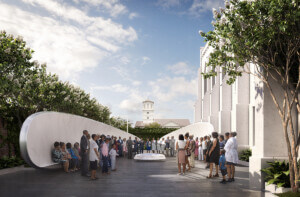A new monument dedicated to Martin Luther King, Jr., and Coretta Scott King is coming to Boston—the city where they first met—and five teams are in the running to design it. This week, MLK Boston, the organization spearheading the effort, announced the finalists chosen for the project.
The official memorial will sit in Boston Common, the oldest park in the United States, where King marched and addressed the public on April 23, 1965. Within the 50-acre space are other monuments and landmarks including the Shaw Memorial and the Parkman Bandstand. The Boston Capitol Building, the Freedom Trail, as well as the Black Heritage Trail also surround the 384-year-old site.
To provide context for the new memorial, MLK Boston asked participants to create a site-specific permanent installation that would incorporate engraved phrases of the Kings’ seminal texts and speeches, and would use digital technology to enhance users’ experience. With the park serving as an everyday gathering place and home to many notable historic rallies, the memorial is meant to both inspire and engage the local community to reflect upon the pairs’ contributions to the Civil Rights Movement and the future of equality, peace, and justice in the United States.
Through October 16, the public can review each of the proposals and submit feedback. All designs are also on view at the Boston Public Library in Copley Square and the Bolling Building in Roxbury. Check out the five finalists below:
Avenue of Peace
Yinka Shonibare and Stephen Stimson Associates

This memorial walk in Boston Common will center around a towering fountain covered in a colorful mosaic. Set inside an oval reflecting pool lined with black granite, the sculpture will include the names of the pioneering Civil Rights activists as well as an olive branch design, signifying their commitment to peace. Twenty-two inscribed benches will be built along the walk and an interactive app will be available for download, telling the individual stories of King and Scott before they met in Boston, as well as their life together afterward.
Boston’s King Memorial
Adam Pendleton, Adjaye Associates with Future/Pace and David Reinfurt
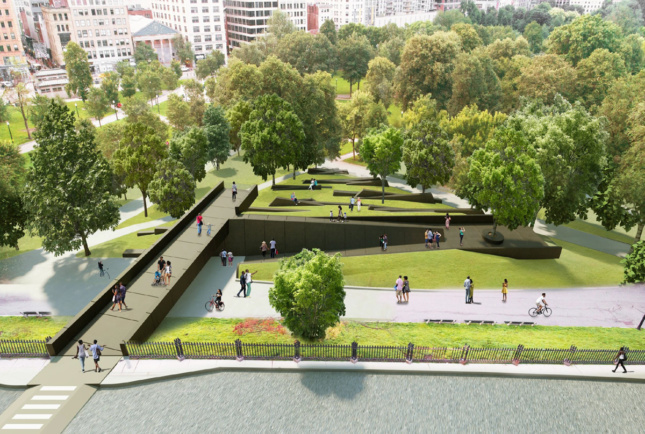
Inspired by Dr. King’s 1968 speech, “I’ve Been to the Mountaintop,” this design provides a panoramic view of Boston Common via an elongated overlook made of black stone. The open structure bridges serve as handicap accessible walking paths descending from Beacon Street, while the sloped stone sculptures on the lawn provide public seating and form a radical amphitheater, according to the architects. Engraved on the surface of each stone is text from the Kings’ most famous speeches. A digital platform for mobile devices will accompany the memorial and provide additional transcripts, audio, and images.
The Embrace
Hank Willis Thomas with MASS Design Group
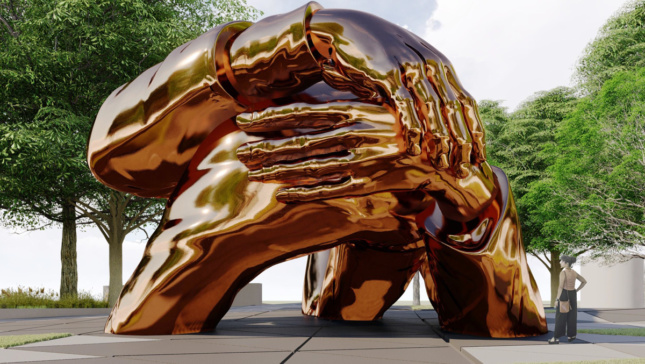
This stand-out sculpture symbolizes the love and commitment that Dr. King and Coretta Scott had for each other, while simultaneously reminding visitors of the power of protest in the fight against injustice. Set atop a gentle incline, the 22-foot-high arms of the couple will be built with a mirrored bronze finish, allowing the reflection of both passersby and the surrounding park to be seen in the sculpture. People can walk through The Embrace and inspect it close up as well. The site will be split into two plazas and form an axis from the Capitol, to the Parkman Bandstand, and to Dudley Square where a proposed MLK education center may be built.
Empty Pulpit Monument
Barbara Chase-Riboud
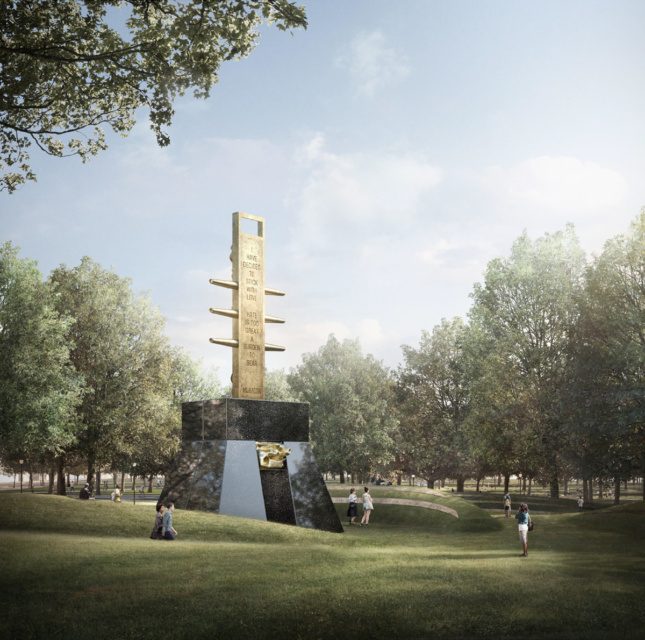
Set inside an undulating landscape of rolling hills, the focal point of this design is a truncated stone pyramid that forms a beacon of light at night. The towering structure is constructed out of granite and bronze and is inspired by a 17th-century wood pulpit, symbolizing MLK’s silenced voice. Visitors can walk underneath the monument via a passageway to see engraved images detailing the diaspora. On the back of the bronze sculpture will be the Kings’ most powerful quote, according to the designer, “I have decided to stick with LOVE, HATE is too great a burden to bear…” Bronze plaques with other famous phrases by the pair will be embedded into the surrounding greenery.
The Ripple Effects
Wodiczko + Bonder/Maryann Thompson Architects with Walter Hood
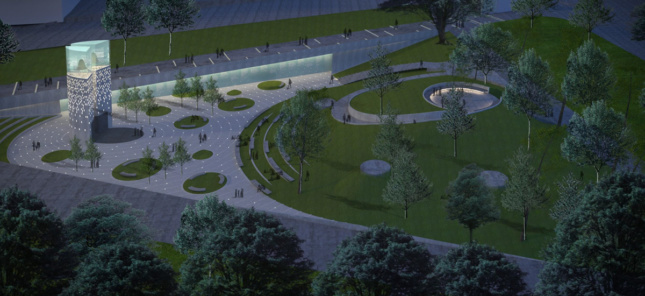
The Ripple Effects showcases the impact the Kings’ leadership has had on future generations and their role in the emancipatory process in Boston, across the U.S., and around the world. Centered around two beacon towers that serve as a reminder of the couples’ continuing presence, the memorial’s ground rises from the plaza with terraced green spaces for seating. It would culminate in an empty, shaded platform for gathering and reflection. The bridge above would lead visitors across the Common and feature inscribed text chronicling emancipatory events from the 19th century to today. Below the bridge will be a glass wall where visitors can literally and figuratively reflect on their own role in this ongoing process of emancipation and activism.









